Recommendation 4 | Principle 2: Openness
Give preference to open specifications, taking due account of the coverage of functional needs, maturity and market support and innovation.
Solutions
| List of all available solutions that implement this recommendation |
|---|
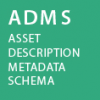
|
ADMS is based on open source, hence it helps to promote the usage of open specifications by public administrations. |

|
The CAMSS library gives access to existing assessments of technical specifications produced through the use of the CAMSS Tools. This can facilitate the selection of open specifications. |

|
The CAMSS List of standards facilitates the selection of open specifications. |

|
The CAMSS tools, by allowing public administrations to assess compliance against (open) specifications and standards, directly promote and support the use of open specifications. |

|
CAMSSaaS supports the assessment and selection of open specifications and standards. |

|
The CEF Big Data Test Infrastructure is based on open specifications and open standards. |

|
The CEF Context Broker is based on open specifications and open standards. |

|
The CAV is a Open Source that allow any stakeholder to reuse it. |
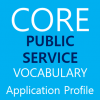
|
The CPSV-AP data model is based on open specifications. Hence, by reusing it, public administrations will in turn be giving preference to open specifications. |

|
The CAV is a Open Source that allow any stakeholder to reuse it. |

|
Core Vocabularies are fully open source data models that can be used by any stakeholder. |

|
Crypto Tool is an open source tool. Hence, by using it, public officials are endorsing the use of open source in public administrations. |

|
CISE data models are based on open specifications. |
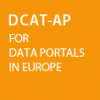
|
DCAT-AP is a solution that is based on open specifications and it is actively maintained by a community of developers. |

|
The CEF eArchiving building block is based on open specifications and open standards. |

|
The eDelivery building block puts forward and provides services and resources around AS4, an open specification for secure data exchange. This can be reused by any organisation throughout Europe. |

|
The CEF eID building block is based on open specifications and open standards. |

|
The Invoicing building block provide services to support the use electronic invoices compliant with the European Standard (EN 16931) for electronic invoices. |

|
The library, in the spirit of EIRA, contains and encourages public officials to give preference to open specifications. |

|
ELI gives preference to open standards by building on standard semantic web technologies (RDF, OWL) and vocabularies (FRBR, SKOS, Dublin Core). |

|
eSignature provides the Member States with the Digital Signature Software (DSS) open-source library to ensure that their eSignatures are created and verified in line with European legislation and standards. |

|
ESPD exchange data models are based on open specifications. |

|
eTrustEx is an open source software with a base of users and it is a mature solution. |

|
Recommendation 12 of the EULF Blueprint recommends the use of open standards where possible. |
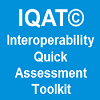
|
The IQAT assesses whether the solution is based on open specifications, when possible. |

|
The LEOS software components are all open source. Hence, by using them public officials are ensuring that they are giving preference to open specifications. |

|
The Online Collection Software is an open source tool, which can be used and modified in the way necessary by the public administrations. Hence, by using it, public officials are endorsing the use of open source in public administrations. |
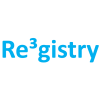
|
The Re3gistry is a source of common reference codes, hence it enables public administrations to use and reuse open specifications in relation to geospatial domain. |

|
Ref2Link proactively supports emerging EU legal identification standards: ELI for law and ECLI for case law. |

|
The Reference Architecture gives preference to open specifications. |

|
The ESS Statistical Enterprise Architecture builds on and promotes the use of commonly accepted statistical standards, such as standard frameworks for the official statistics industry: GSBPM (Version 5.0) , GSIM (Version 1.1) , GAMSO (Version 1.1) and the Common Statistical Production Architecture (CSPA Version 1.3). |

|
TES Cartography contains a list of trans-European solutions, which are largely based on open specifications. |
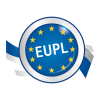
|
The EUPL is an open source software license. By using it, individuals ensure that they give preference to open specifications by default. |
| VocBench is a fully open source solution that can be used and maintained by any stakeholder. |




